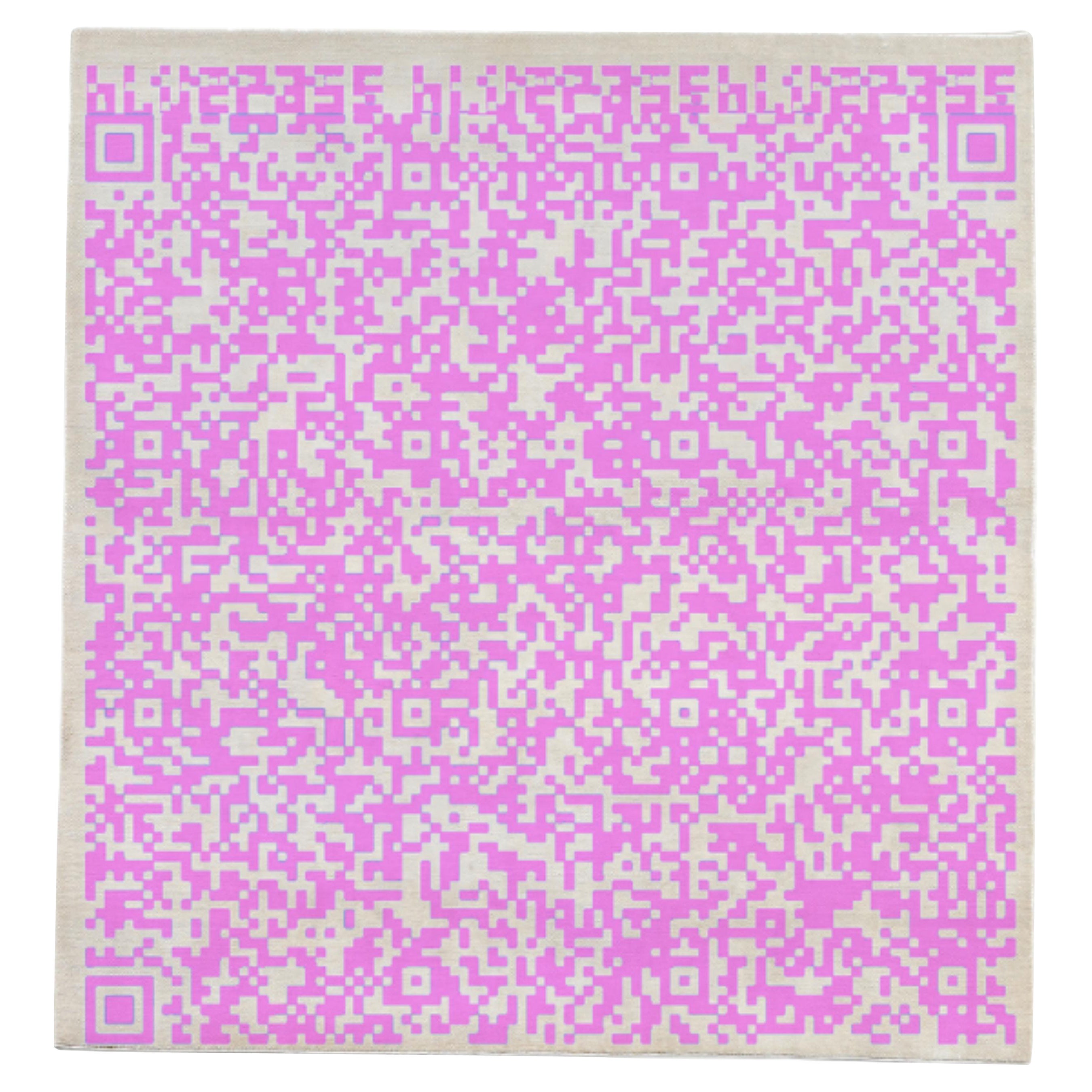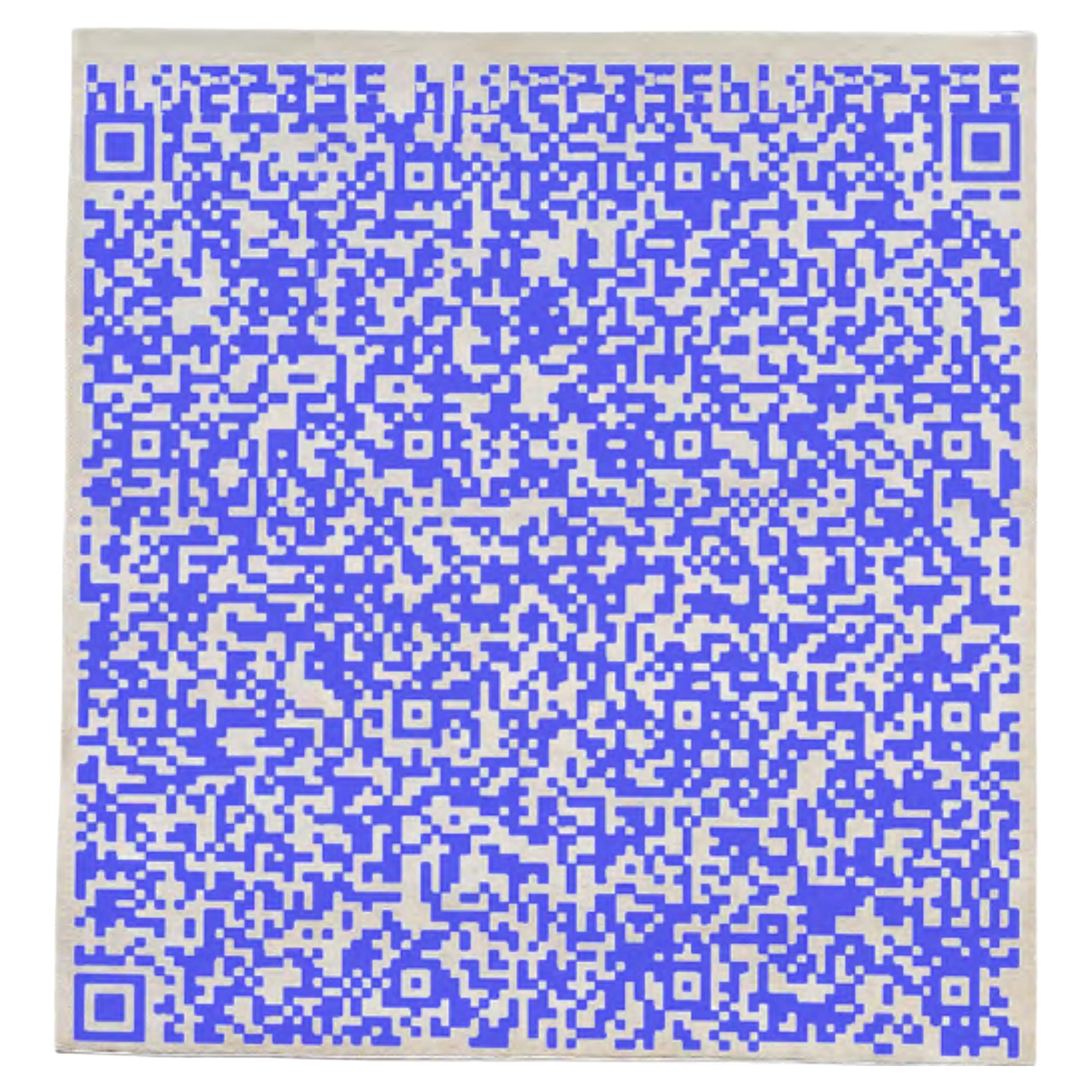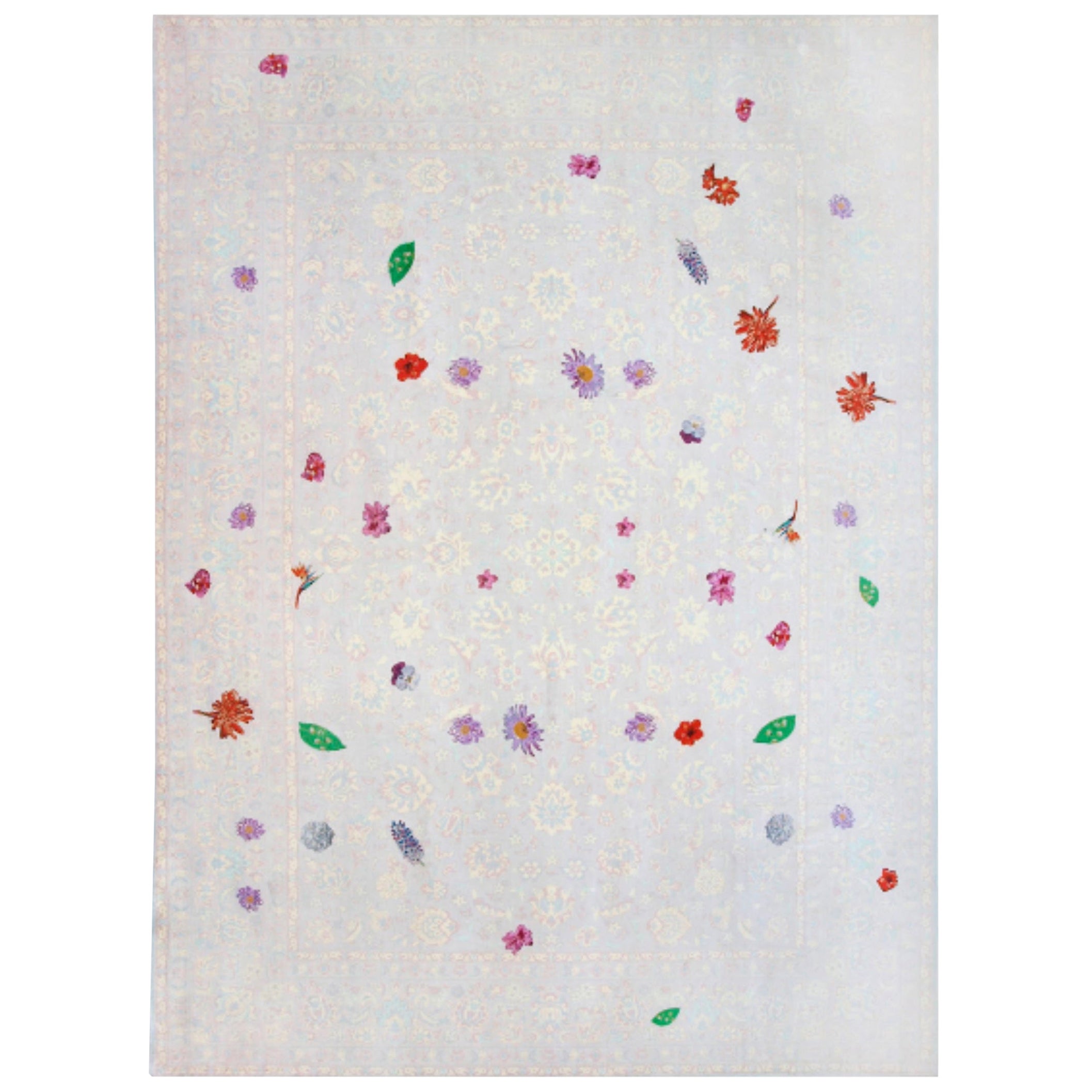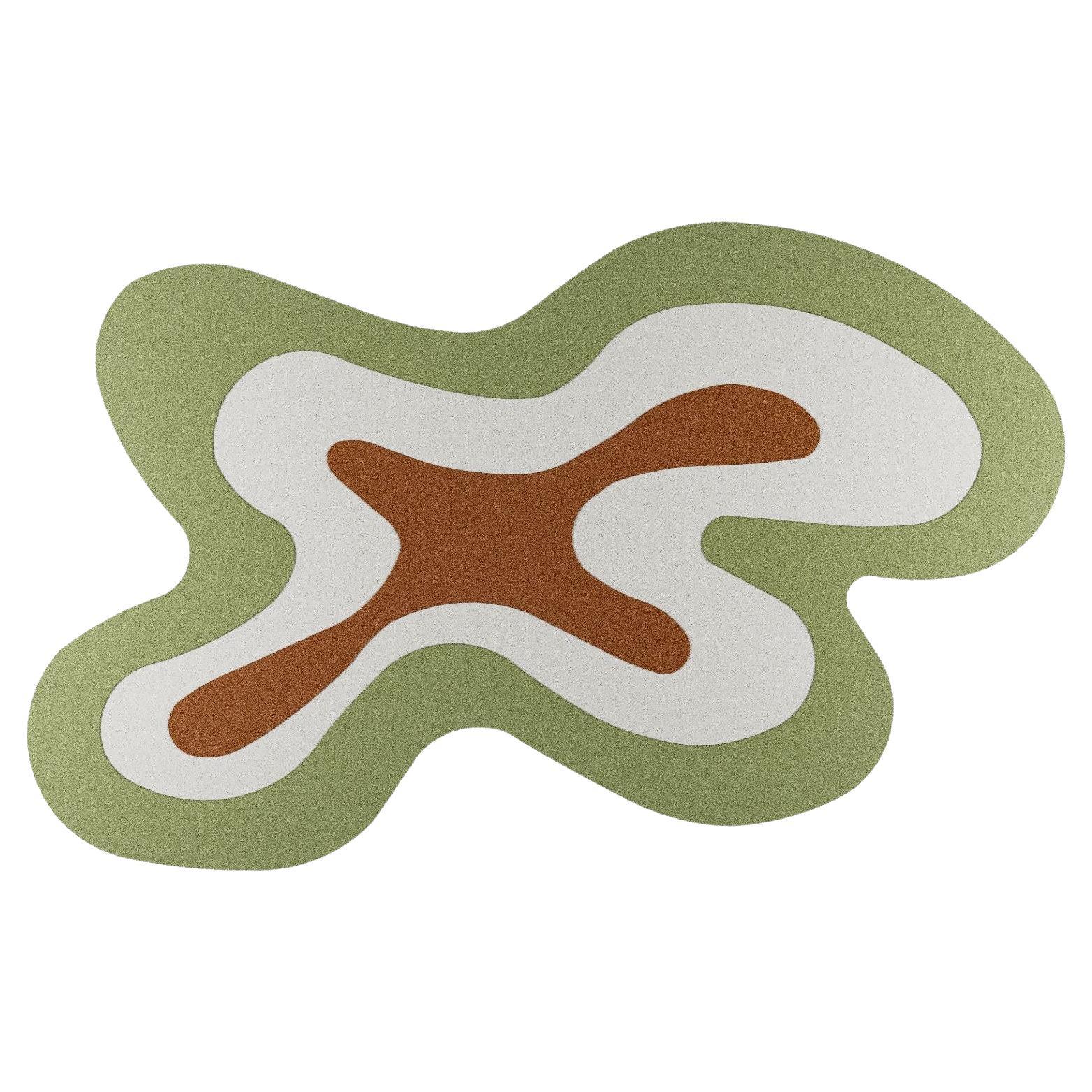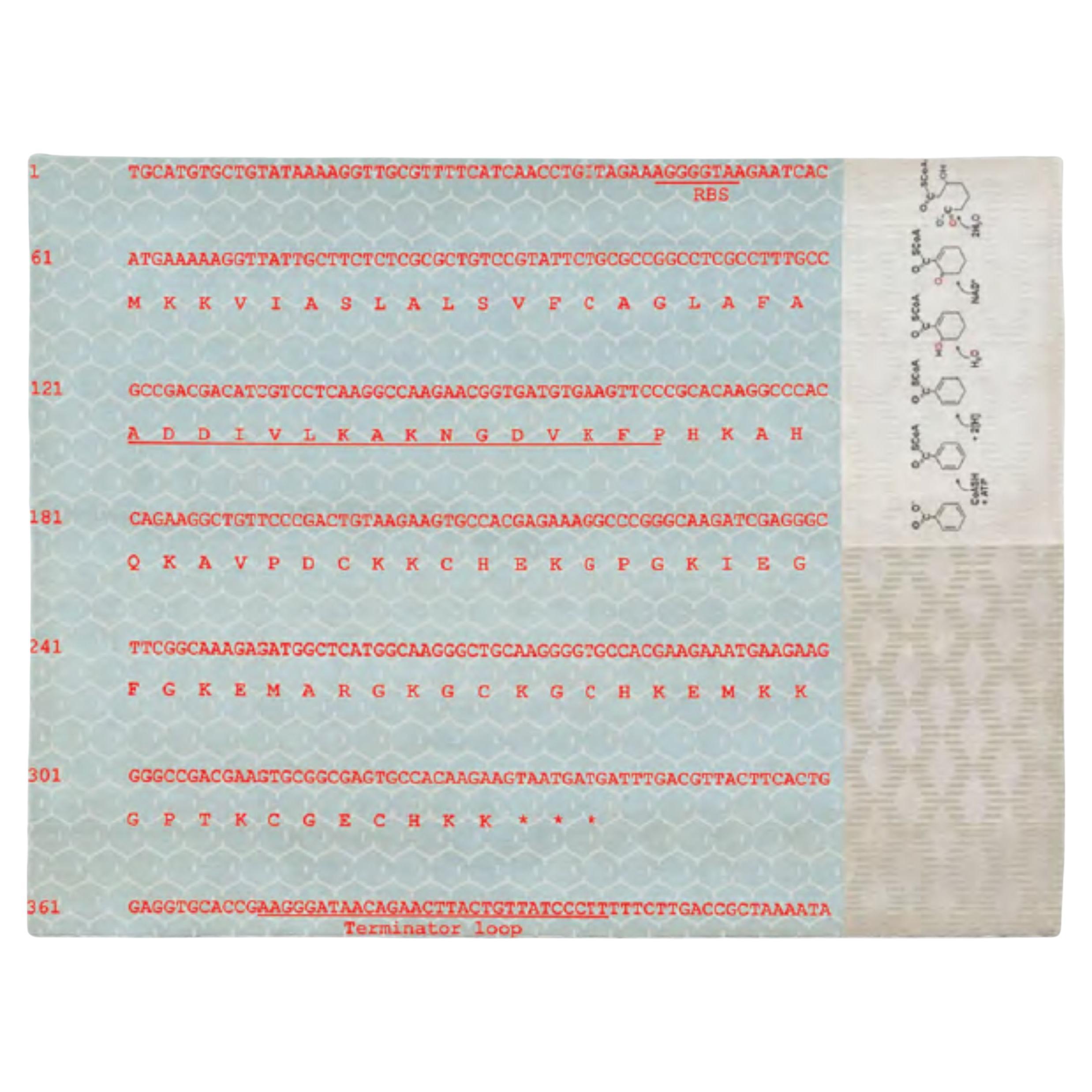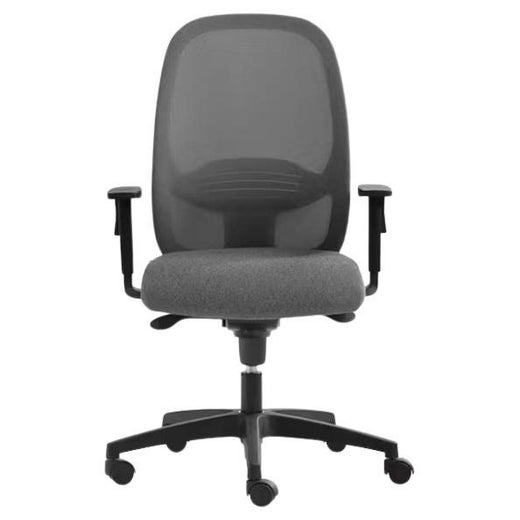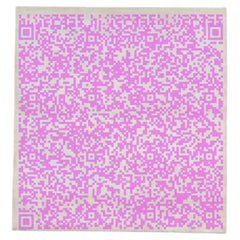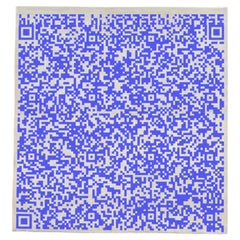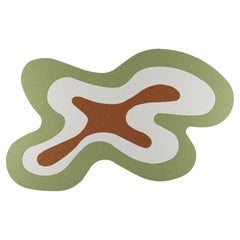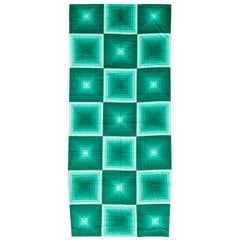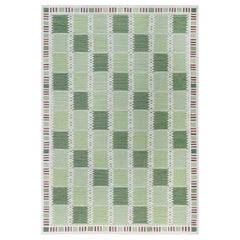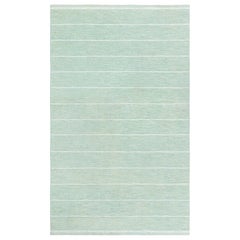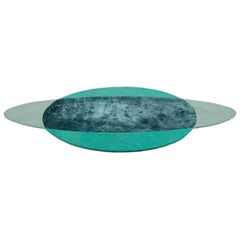Items Similar to CF BPG1 Green Mutation by Caturegli Formica
Want more images or videos?
Request additional images or videos from the seller
1 of 7
CF BPG1 Green Mutation by Caturegli Formica
$16,368.27per item
£12,071.44per item
€13,710per item
CA$22,623.41per item
A$25,158.74per item
CHF 13,204.97per item
MX$306,798.70per item
NOK 166,884.68per item
SEK 156,461.03per item
DKK 104,376.38per item
Quantity
About the Item
CF BPG1 green Mutation by Caturegli Formica
Dimensions: W 225 x L 240 cm
Materials: Wool
Carpets as deep information
Carpets are very common items. But it has never really been clear if their decorations, so confidently woven and intertwined, have a religious, symbolic or simply practical origin.
Anthropology does not fully clarify the matter, and historians simply focus on classifying colors, techniques, ethnic signs. Personally, though, I have always had the impression that carpets, apart from their geographical source, have a much more complex origin, not connected with their religious or secular use, but instead with the representation of cosmic vibrations or information. I sense that the carpet (like a big ear) can directly record from the ground on which it is spread.
The mysterious intertwinings of carpets seem, in fact, to record forms of mystical thought that spring spontaneously from the infinite, ritualized but always varied repetition of their weave. A sort of cognitive, reiterative, exploratory structure that is born in the dark mazes of a collective mind, that reflects on the expansion of the cosmos. Something like the visions of a blind man, who describes a universe he has never seen.
Like the visible circles on water, the carpet records invisible circles and forms, following logical theorems that cannot be deciphered, conceived by some theoretical physicist who investigates unexplored levels of the world and knowledge.
I think Caturegli and Formica approach this mysteric-scientific dimension of carpets, interpreting them as deep genetic diagrams or the memory of faraway superficial tracks (villages, or tires). Somehow, in fact, their carpets are no longer carpets, because they are not just carpets but reflections on the permanence of decorative diagrams within the logic of nature, science and technology.
Carpets, then, as sensitive surfaces that record some kind of inexplicable harmonies, reproducing them not as decorations but as sacred patterns, as deep information that only the textile surface, in contact with the ground, is able to transmit.
Biographical notes
Beppe Caturegli (1957) and Giovannella Formica (1957-2019) shared a background in the cultural atmosphere of the Radical Architecture movement in Florence. After taking architecture degrees in 1982, they moved to Milan to begin a long, intense working relationship with Ettore Sottsass, the Memphis group and the magazine Terrazzo.
In 1987 they opened the Caturegli Formica Architetti Associati studio and for ten years they worked as consultants for Computer Associates, a US-based software firm, for which they designed facilities in Milan and Rome. Alongside work on architecture and interiors, they have designed products for many different Italian and international companies, including Sanyo, WMF and Fontana Arte.
Their curiosity and passion for architecture around the world has led to frequent trips to the United States and Japan, and then regular travels in India and several African countries, where they have conducted research in collaboration with local architects, artists and artisans. The aim is to enrich the meaning of products, projects and works of architecture, using mixed systems: industrial/crafts, global/local, mass-produced/one-off.
In the period 1987-1991 they created Terre, a ceramics series produced in the workshop Céramiques Almadies, and collaborated with the design group 100% Dakar, honoured by the President-poet Léopold Senghor for their work on racial integration.
From 1989 to 1993 they worked on the restoration and extension of a vast estate in Madras (Chennai), and made a series of symbolic stone objects in collaboration with the sculptors of Mahabalipuram.
Their work is very heterogeneous, ranging from residential and commercial architecture to restoration, interiors to furniture, lamps and flatware, paintings and ceramics to video.
Since the early 1980s they have designed carpets, seen both as useful objects and as maps of knowledge. Most of the carpets are part of site specific works for private clients. This is a way of working on the applied arts that goes almost against the current, in a period in which industrial design moves toward global standardization and uniformity.
In 1989 they participated, together with the Memphis group, in the exhibition Carpets at the Design Gallery, and created a collection of carpets and tapestries for Elio Palmisano in Turkey and Italy. Later, they have also worked in Iran, China, Singapore, Hong Kong, Kashmir and Tibet, collaborating with craftsmen and selecting small companies that use purification systems for water used in colouring, and apply procedures for the safety and well-being of workers.
Since 2004, Nilufar Gallery has shown the Caturegli Formica carpets collections .
In 2007, for the exhibition Onehundred, they presented Super-market, a collection of cabinets called Photo-boxes and characterized by images reproduced on the doors that show the geography of global consumption and document real places and objects of the planet.
In 2010 they presented a series of twenty photo-montages and eight collections of rugs for their exhibition Nodi/Hubs, a kind of reflection on certain macro-knots of occidental thinking: the environment and consumption of the territory, genetics and GMOs, catastrophes, chaos theory, archival storage and the mind, the chemical essence of life.
One aspect of their research, honoured with international prizes and publications, is the structural use of colour and light in architecture. More recently, they have put great commitment and research into an energetic use of light, in the context of bio-architecture projects with objectives of heightened sustainability.
In 2004-2014 they carried on the project of restoration and revitalization of a vast historic property in Tuscany, where they have applied advanced solutions for energy supply and savings, through the use of a range of integrated alternative energy sources. The Tenuta dello Scompiglio estate includes a theatre, rehearsal rooms for musicians, an art gallery, a restaurant, residences for artists and many hectares for biodynamic agriculture.
In 2014-2017 they designed several spaces devoted to host art collections and produced seven new rugs collections, embroideries, furnitures, vessels, photomontages and concept books.
Their works have been showed at the Deichtorhallen Hamburg, Centre Pompidou Paris, Mino Ceramic Art Museum Japan, Metropolitan Museum of Art NYC, Triennale di Milano.
- Dimensions:Width: 88.59 in (225 cm)Length: 94.49 in (240 cm)
- Style:Post-Modern (Of the Period)
- Materials and Techniques:Wool,Other
- Place of Origin:
- Period:
- Date of Manufacture:2022
- Production Type:New & Custom(Current Production)
- Estimated Production Time:18-19 weeks
- Condition:
- Seller Location:Geneve, CH
- Reference Number:1stDibs: LU1219234015972
Galerie Philia
Galerie Philia is an international contemporary sculptural design and art gallery representing emerging and established designers and artists. The gallery is the brainchild of two brothers who share a lifetime passion for art, literature and philosophy. Their distinct academic background sets them apart from their peers, as it sees them following a rhizomatic and transcultural approach in the way they select works. This involves combining elements from multiple cultures in what becomes a network of harmoniously interconnected roots, ultimately revealing the beauty of each unique creation. The gallery’s non-hierarchical curation sits apart from the ephemerality of trends and focuses instead on the true aesthetic quality of the piece – alluring and timeless. Unlike others, Galerie Philia does not focus on a single style – whether minimalist, organic or raw – but rather embraces heterogeneity. The Galerie Philia takes pride in discovering new talents, providing them with multiple international platforms to showcase their latest creations. As well as propelling the newest generation of 21st century collectible design, Galerie Philia also works with internationally known design artists. Galerie Philia has a strong international presence, with galleries in Geneva, New York and Singapore. In addition to their permanent spaces, the gallery organizes temporary group exhibitions and artists residencies in first-class locations around the world.
Made to order creations can be done: please contact us for any request.
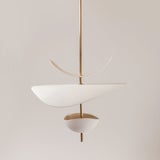
About the Seller
5.0
Recognized Seller
These prestigious sellers are industry leaders and represent the highest echelon for item quality and design.
Diamond Seller
Premium sellers with a 4.7+ rating and 24-hour response times
Established in 2015
1stDibs seller since 2015
4,995 sales on 1stDibs
Typical response time: <1 hour
- ShippingRetrieving quote...Shipping from: Milano, Italy
- Return Policy
Authenticity Guarantee
In the unlikely event there’s an issue with an item’s authenticity, contact us within 1 year for a full refund. DetailsMoney-Back Guarantee
If your item is not as described, is damaged in transit, or does not arrive, contact us within 7 days for a full refund. Details24-Hour Cancellation
You have a 24-hour grace period in which to reconsider your purchase, with no questions asked.Vetted Professional Sellers
Our world-class sellers must adhere to strict standards for service and quality, maintaining the integrity of our listings.Price-Match Guarantee
If you find that a seller listed the same item for a lower price elsewhere, we’ll match it.Trusted Global Delivery
Our best-in-class carrier network provides specialized shipping options worldwide, including custom delivery.More From This Seller
View AllCF BPG1 Pink Mutation by Caturegli Formica
Located in Geneve, CH
CF BPG1 pink Mutation by Caturegli Formica
Dimensions: W 225 x L 240 cm
Materials: Wool
Carpets as deep information
Carpets are very common items. But it has never really bee...
Category
2010s Italian Post-Modern Rugs
Materials
Wool
$16,368 / item
CF BP Bluepass by Caturegli Formica
Located in Geneve, CH
CF BP bluepass by Caturegli Formica
Dimensions: W 225 x L 240 cm
Materials: Wool
Carpets as deep information
Carpets are very common items. But it has never really been clear...
Category
2010s Italian Post-Modern Rugs
Materials
Wool
$16,368 / item
CF F1 2018 by Caturegli Formica
Located in Geneve, CH
CF F1 2018 by Caturegli Formica.
Dimensions: W 320 x L 230 cm
Materials: Silk
Carpets as deep information
Carpets are very common items. But it has never really been clear if...
Category
2010s Italian Post-Modern Rugs
Materials
Silk
$54,131 / item
Musgo Green Large Rug by Brera Studio
Located in Geneve, CH
Musgo green large rug by Brera Studio
Unique piece. Handmade.
Dimensions: W 324 x L 200 cm.
Materials: 100% wool.
Musgo Rug is a unique piece, part of the Terra collection desi...
Category
2010s Mexican Post-Modern North and South American Rugs
Materials
Wool
$18,123 / item
CF V8 2014-2015 by Caturegli Formica
Located in Geneve, CH
CF V8 2014-2015 by Caturegli Formica
Dimensions: W 250 x L 330 cm
Materials: Wool
Produced by Elio Palmisano in 1989-90 for the collection/exhibition Tappeti e Arazzi
Biographical notes
Beppe Caturegli...
Category
2010s Italian Post-Modern Rugs
Materials
Wool
$24,821 / item
Eira Green Rug by Volver Studios
Located in Geneve, CH
Eira Green Rug by Volver Studios
Dimensions: W 250 x L 350 cm.
Materials: Wool and viscose.
Available in seven size options: 90 x 240 cm, 140 x 200 cm, 170 x 240 cm, 200 x 300 cm, 2...
Category
2010s Norwegian Post-Modern Western European Rugs
Materials
Other
$7,103 / item
You May Also Like
Mid Century Modern Vintage Green Verner Panton “Quadrat” Textile 3'10" x 8'9"
By Verner Panton
Located in New York, NY
A Quintessential Mid Century Modern Vintage Green Color Verner Panton “Quadrat” Textile, Country of Origin: Scandinavian, Circa Date: Mid 20th Century
Category
Mid-20th Century Danish Scandinavian Modern Russian and Scandinavian Rugs
Materials
Other
Modern Swedish Flat Weave Wool Rug by Doris Leslie Blau
Located in New York, NY
Modern Swedish Flat Weave Wool Rug
Size: 12'0" × 17'7" (365 × 535 cm)
Color: Beige, Brown, Green
A captivating expression of Scandinavian craftsmanship, this large-scale modern Swedi...
Category
21st Century and Contemporary Swedish Scandinavian Modern Russian and Sc...
Materials
Wool
Vintage Swedish Green Flat Woven Rug Doris Leslie Blau
Located in New York, NY
Vintage Swedish Green Flat Woven Rug
Size: 6'1" × 10'0" (185 × 304 cm)
This vintage Swedish flat-weave rug showcases a beautifully balanced striped pattern, emphasizing the simplicit...
Category
Mid-20th Century Scandinavian Mid-Century Modern Russian and Scandinavia...
Materials
Wool
All Around Carpet Green by Pierre Gonalons Paradisoterrestre Edition
By Pierre Gonalons, Paradisoterrestre
Located in Ozzano Dell'emilia, IT
Materials: wool and bamboo silk.
Colours: shades of green; also available in shades of pink or shades of blue.
“After The Other Side, my first collection for Paradisoterrestre in 2...
Category
21st Century and Contemporary Italian Western European Rugs
Materials
Wool, Silk
1960s Vintage Art Deco Rug in Green, Multicolor Pictorial Pattern by Rug & Kilim
Located in Long Island City, NY
Hand-knotted in wool, a scintillating vintage 6x10 Art Deco rug from Rug & Kilim’s Mid-Century Pasha Collection featuring notable works of the iconic ...
Category
Vintage 1960s Turkish Art Deco Turkish Rugs
Materials
Wool
$11,904 Sale Price
20% Off
Vintage Green “kreis” Verner Panton Textile 3'10" x 3'10"
By Verner Panton
Located in New York, NY
Vintage Green “Kreis” Verner Panton Textile, Origin: Denmark, Mid 20th Century
Category
Mid-20th Century Danish Scandinavian Modern Russian and Scandinavian Rugs
Materials
Other
Read More
Galerie Philia Unveils Limited-Edition Designs at Giampiero Tagliaferri’s New L.A. Studio
For the exhibition “Materia Perpetua,” the gallery asked an international group of makers — including Tagliaferri — to explore the possibilities of a surprisingly versatile material: onyx.
Galerie Philia Doesn’t Just Discover Fresh Design Talent — It Grows It
With an impressive slate of international exhibitions, the Geneva-based gallery raises the profiles of emerging designers.
More Ways To Browse
Italian Formica
Italian China Cabinet
Sorting Cabinet
Sottsass Carpet
Green Industrial Cabinet
Real Stone China
The Leopold Company
Tapestry Door
Green Chinese Cabinet
1980s China Cabinet
Madras India
United Furniture Company China Cabinet
Company Painting India
Iranian Lamp
African Water Vessel
Chinese Ritual Vessels
Japan Flatware
Japanese Document Boxes
